
We often take for granted the five senses and how lucky most of us are to be able to use all of them on a daily basis. We tend to complain about minor problems that seem significant, such as a boring job or an annoying roommate, but these are merely dips in the road that is our life. These issues can be fixed or dealt with over time. Losing one´s vision or becoming visually impaired, however, is not something one can fix. It completely changes the way a person has to live-whether they were born blind or visually-impaired or become that way later in life.

A few weeks into my arrival in Madrid, I noticed ONCE (Eleven) on lottery tickets and advertisements for the lottery. I initially assumed it was just a certain kind of lottery. Later, I found out that ONCE is the “Organización Nacional de los Ciegos Españoles”, or the “National Organization for the Spanish Blind.” It is a non-profit organization that works to improve the quality of life for blind, vision-impaired, and handicapped people throughout Spain. They carry out their work through opening schools for blind and vision-impaired children, funding art and music projects for people with disabilities, and organizing other activities to help disabled people increase their autonomy. ONCE receives some government funding but also raises money through national lottery tickets. Although the majority of ONCE’s work is done in Spain, the organization also works internationally throughout Europe and Latin America.
Not really sure what to expect, I decided to go to ONCE´s museum, the Museo Tiflológico, after a friend recommended it to me. Half of the museum is composed of scale models of famous Spanish and International monuments and the other half is split between artwork and history.

There are models of everything- from the Taj Mahal to the Colosseum- and each of the monuments has a description in Spanish and Braille.
As I wandered through the museum, I tried to imagine what life would be like without the ability to visually perceive my surroundings. There would be no more smiles, rainbows or sunsets. Everyday activities would be more difficult to carry out. And one of my favorite passions, travel, would not be the same. I would have to depend on others to describe famous monuments and beautiful natural landscapes as my mind constructed the pictures.
I remembered reading Helen Keller´s, The Story of my Life, and reflecting on the daily struggles she faced. Although she was able to do many things on her own, such as reading and writing, she still had to depend on others to help her get through daily life. I was amazed by how successful her teacher, Anne Sullivan, was in teaching Helen not only how to read but how to interpret her surroundings relying on taste and touch alone.
I’ve heard that when people do not have one or more of the five senses, the ones they do have are much stronger. It is amazing how blind people are able to utilize and strengthen their sense of touch to function and communicate successfully in a world that caters to those who can see.
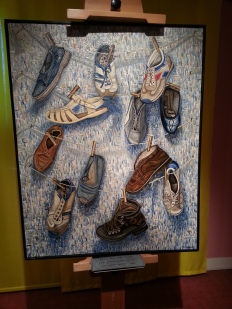
Las zapatas viejas (Old Shoes), painted by someone who is visually-impaired
The Museo Tiflológico highlights this success in their display of art made by blind and vision-impaired people. Many people take pity on the blind and vision-impaired; they don´t think they are capable of living a fruitful life. The paintings at the Museo Tiflológico prove that the blind and vision-impaired can lead very successful lives. The museum celebrates their talents and shows that all of us-whether we are seeing, blind or vision-impaired-can utilize our creativity and natural talents.

Lluvia en la ciudad (Rain in the City), painted by a person who is legally blind
The last part of the museum houses examples of Braille writing tools-from the past and present- and even a Braille map. There are explanations about how the tools work and even guidelines on how to read and write in Braille. (If you pick up a museum guide when you enter, there is a Braille to Spanish alphabet on the back which you can use throughout the museum!)
Despite the differences in our writing tools, methods of communication and daily rituals, the Museo Tiflológico strives to teach visitors that blind, vision-impaired and seeing people are all alike in many ways. The museum does a great job explaining the world of the blind and visually-impaired to seeing people so that they can relate to them. As a “touch and see” museum, the Museo Tiflológico is a common place for everyone to enjoy and learn from one another.
*For museum hours and more information on the Museo Tiflológico, check out their website: http://museo.once.es/ . The easiest way to reach the museum is by metro. Get off at Estrecho on line 1. The cost of entry to the museum is free.
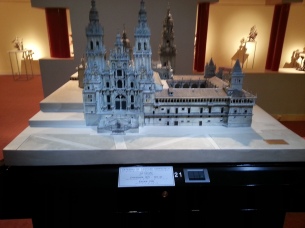
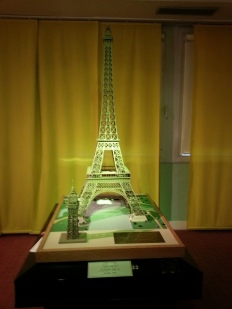
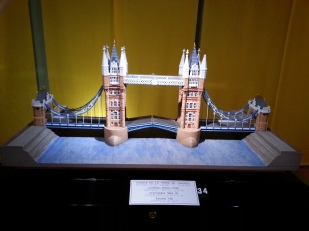
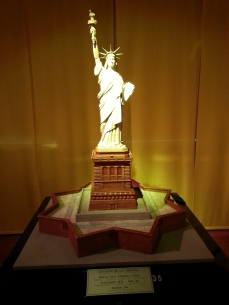
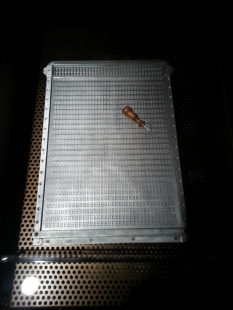
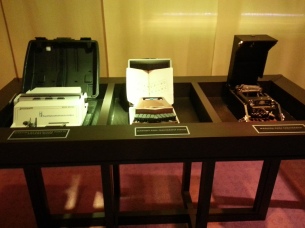
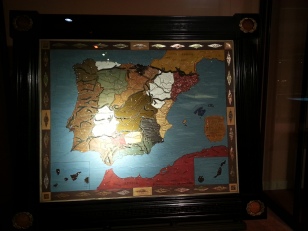
Dear Veronica, good to hear from you.I guess by now your Dad is seeing Spain through your eyes>Have a great time.Just a little food for thought.Afflictions of our senses are most trying.I have worked with blind,deaf and people with both,some acquired and others from birth.The blind person is usually happy,adjusted interesting ,social.My piano tuner is an excellent such person. Never fails to end with sonata or etude,and wants to “SEE” some clocks.My friends who are dealing with deafness are present at functions but never a part of the doings.One has to make a special effort to make them part of the party,but the wind up bystanders. My Mother would not attend church,and would stay in her room when we entertained. My friends would go to her room to greet her ,then she ate alone and went to bed to read.The deaf feel left out,suspicious of others intentions..Didn’tmean to ramble but wanted to give you a different “view”.Love Grandmama